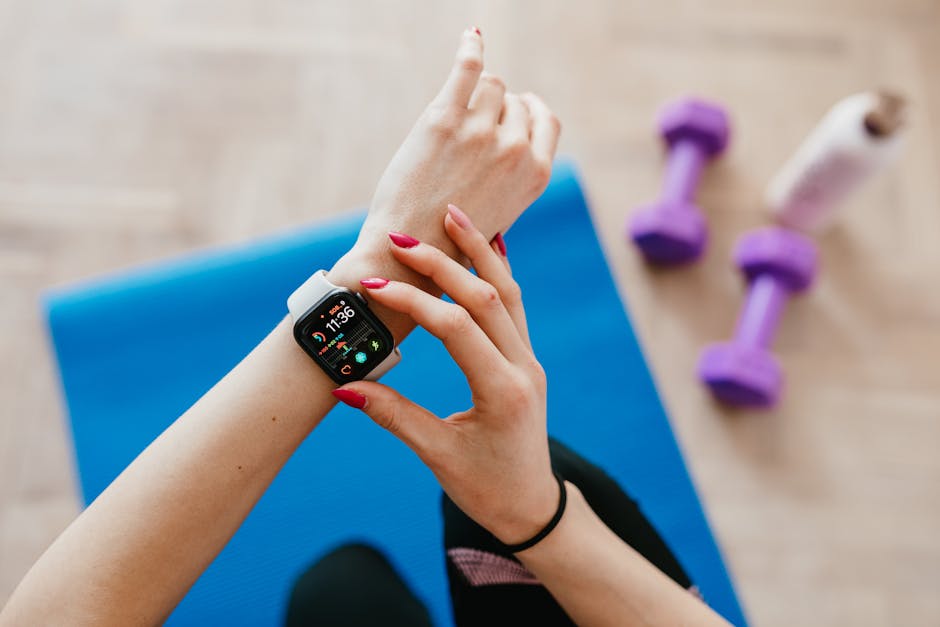
How Does Tech Wellness Support Mental Health? Your Guide to Mindfulness Apps & Digital Tools
Share
Tech Wellness for Mental Health: Why It Matters

Technology is increasingly shaping the way we care for our minds. From mindfulness apps to virtual support groups, tech wellness tools are transforming mental health support—making it more accessible, personal, and effective for many people.
What Is Tech Wellness?
Tech wellness refers to using technology mindfully and intentionally to support your mental and emotional wellbeing. This includes:
- Mindfulness and meditation apps
- Digital therapy and online counseling platforms
- Wearable devices for stress and mood tracking
- Virtual support communities
- Digital tools for self-care, education, and relaxation
The goal is to harness technology as a positive force for mental health, while also being aware of its risks and limitations.
How Technology Supports Mental Health

1. Expanding Access to Mental Health Care
- Online therapy platforms like BetterHelp and Talkspace connect users to licensed therapists from home, reducing barriers such as distance, cost, and stigma.
- Telehealth offers evidence-based treatments (like cognitive-behavioral therapy) via video, voice, or chat, making support more flexible and private.
2. Mindfulness Apps & Digital Mindfulness Tools
- Apps like Calm, Headspace, and Insight Timer offer guided meditations, breathing exercises, and sleep support.
- Many apps include mood tracking, daily check-ins, and reminders, making mindfulness a practical habit.
- Some digital tools use AI chatbots to provide instant support and coping strategies, especially during moments of stress or anxiety.
3. Wearable Devices and Wellbeing Trackers
- Fitness trackers and smartwatches can monitor heart rate, sleep, and activity—providing insight into stress patterns and emotional triggers.
- Some devices prompt users to take breaks, breathe, or move, nudging healthier routines throughout the day.
4. Online Support Communities
- Forums, group chats, and virtual support groups offer connection for those who might feel isolated or prefer anonymity.
- Sharing experiences and advice can reduce stigma and increase motivation to seek help when needed.
5. Mental Health Education & Stigma Reduction
- Social media campaigns, blogs, and webinars can spread awareness, educate about mental health, and normalize conversations about emotional wellbeing.
The Benefits of Tech Wellness for Mental Health
- Convenience: Support is accessible anytime, anywhere, fitting around busy schedules.
- Personalization: Apps and devices can tailor recommendations based on your data and preferences.
- Anonymity: Digital tools offer privacy and discretion for those hesitant to seek in-person help.
- Cost-Effectiveness: Many mental wellness tools are free or low-cost compared to traditional therapy.
- Continuous Support: Daily check-ins, reminders, and tracking encourage consistency in self-care.
Potential Downsides and Safety Tips
While tech wellness offers many benefits, there are important cautions:
- Information Overload: Too many apps or notifications can cause stress.
- Quality Concerns: Not all apps are evidence-based or secure; choose tools from reputable sources or with clinical backing.
- Privacy Risks: Personal health data may be shared or breached. Always check privacy policies and security features.
- Not a Replacement for Professional Care: Digital tools can support but not fully substitute for in-person therapy, especially for severe conditions or crises.
Safety Tip: If you or someone you know is in immediate distress, contact a mental health professional or crisis helpline. Tech tools can supplement, but not replace, urgent human support.
Practical Steps: Using Tech Wellness Tools Wisely
1. Assess Your Needs
- Are you seeking stress relief, connection, or professional support? Identify your primary mental wellness goals.
2. Research and Choose Reputable Tools
- Look for mindfulness apps or digital mental health tools that are clinically validated, user-rated, and transparent about privacy.
3. Start Small and Set Boundaries
- Begin with one or two apps or devices. Set daily or weekly goals, and avoid becoming overly reliant or overwhelmed.
4. Blend Digital and Offline Wellness
- Use tech to support, not replace, real-world self-care: exercise, socializing, nature, and downtime without screens.
5. Regularly Review and Adjust
- Check in with yourself: Is this tool helping? Adjust usage or try alternatives as your needs evolve.
Tech Wellness Tools: What’s Available?
Mindfulness Apps
- Calm: Guided meditation, sleep stories, breathing programs.
- Headspace: Mindfulness basics, courses for stress, anxiety, sleep.
- Insight Timer: Large free library of meditations and talks.
Online Therapy Platforms
- BetterHelp, Talkspace, 7 Cups: Text, video, or chat with licensed counselors.
Wearable Devices
- Fitbit, Apple Watch, Oura Ring: Track physical activity, heart rate variability, and sleep patterns linked to stress levels.
Digital Support Communities
- Reddit’s r/mentalhealth, Facebook groups, or dedicated mental health forums for peer support.
Mental Health Education
- Mental health podcasts, YouTube channels, and blogs for learning and stigma reduction.
FAQ: Tech Wellness & Mental Health
Q1: Are mindfulness apps effective for managing stress and anxiety?
Many apps offer evidence-based mindfulness and cognitive-behavioral techniques that can help manage daily stress and anxiety. However, results vary by individual, and these tools are most effective when used alongside other healthy habits.
Q2: Can digital tools replace traditional therapy?
Tech wellness tools can supplement and support mental health care, but they are not a substitute for professional diagnosis or therapy, especially for severe or complex mental health needs.
Q3: How do I know if a mental wellness app is trustworthy?
Look for apps that are developed with clinical input, have positive user reviews, and transparent privacy policies. Avoid apps that make unrealistic claims or lack clear evidence for their methods.
Q4: Are there risks to using technology for mental wellness?
Some risks include data privacy concerns, over-reliance on digital support, and exposure to misinformation. Use tech mindfully, set healthy boundaries, and consult professionals as needed.
Q5: What should I do if a digital tool isn’t helping or is making things worse?
Stop using the tool and consider seeking guidance from a mental health professional. Sometimes digital support is not the right fit, and that’s okay—other options are available.
Remember, tech wellness is about balance. Use technology as a helpful companion on your mental health journey, but stay tuned in to what works for you—and don’t hesitate to reach out for human support when needed.
References
- Brightpoint MD (2024). The Positive and Negative Effects of Technology on Mental Health. Brightpoint MD. Available at: https://www.brightpoint-md.com/awareness-program/effects-of-technology-on-mental-health/. Accessed 2025-10-24.
- Raphael, R. (2020). Mental Wellness and Technology: Rethinking the Relationship. Global Wellness Summit. Available at: https://www.globalwellnesssummit.com/2020-global-wellness-trends/mental-wellness-and-technology/. Accessed 2025-10-24.
- UserWay (2024). Technology and Mental Health | Innovations in Wellness. UserWay. Available at: https://userway.org/blog/technology-and-mental-health/. Accessed 2025-10-24.
- National Institute of Mental Health (2024). Technology and the Future of Mental Health Treatment. NIMH. Available at: https://www.nimh.nih.gov/health/topics/technology-and-the-future-of-mental-health-treatment. Accessed 2025-10-24.
- Telefónica (2024). Benefits of technology in mental health care. Telefónica. Available at: https://www.telefonica.com/en/communication-room/blog/benefits-technology-mental-health-care/. Accessed 2025-10-24.
